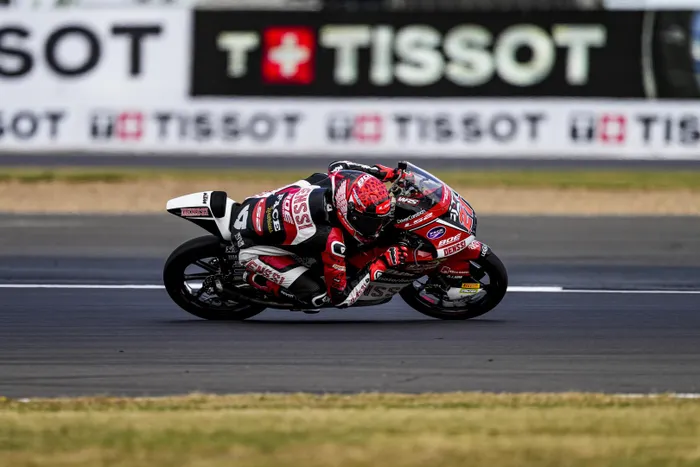Moodley muscles through pain at Silverstone with eye on future

Ruche Moodley is the sole South African racer currently competing in the Moto3 world championship. The 18-year-old missed round six of the 2025 schedule as he was recovering from a crash in which he fractured the radius in his right arm.
Image: Supplied / BOE Motorsports
YOU DON'T have to be an elite, or even half-decent, athlete to appreciate how even a small injury can wreck your day. Hurt your dominant hand and even simple, menial everyday tasks become a real chore. Goodness, even a split cuticle can cause one a good deal of misery.
But not a fraction of the discomfort, misery and chore that comes with belting down a track at breakneck speed with a recently healed limb, knowing that if that limb gives in and fails to function properly, it could result in a season- or career-ending crash!
Having said all that, it takes raw courage to compete in Moto3. But it takes discipline and maturity far beyond your years to throttle that courage just enough to finish what you’ve started — especially when your body is still healing. That was the quiet triumph of South Africa’s Ruche Moodley at last weekend’s Silverstone Grand Prix.
The 18-year-old from Gqeberha, South Africa’s lone representative in the Moto3 world championship, returned to racing just weeks after fracturing his right radius in a high-speed crash during the Spanish Grand Prix. Though cleared by the FIM medical team to race, the pain and physical limitations were still very real.
“I was really happy when the FIM medical team gave me clearance to race this weekend,” Moodley said at the start of the weekend. “I was frustrated watching the French GP from my couch at home.”
A lesser rider might have thrown caution to the wind. But with a double long-lap penalty to serve and an arm that had only recently come out of immobilisation, Moodley took the mature route — prioritising survival over showmanship. He made his return count not by chasing glory, but by seeing the bigger picture.
“It was great to be back on the bike,” he said. “I have been training almost from the day I got back from hospital, so I knew my fitness wasn’t going to be a problem. But my arm was still quite sore.”
Despite qualifying 21st, Moodley knew his race would be more about management than margin. “Silverstone is such a high-speed circuit, both with long straights and fast, flowing corners. It really is a physical track that demands a lot of riders.”
“We had made a decision that I would stay out of trouble on the opening laps. If I crashed or was taken out, my penalty laps would be carried over to the next race. So I took it easy at the start and dropped a few positions on the opening lap. This race, for me, was all about getting to the finish line more than anything else.”
Moodley tactically served both long-lap penalties early on — laps two and three — when the field was still tightly packed. He then settled into a rhythm, riding through mounting fatigue and numbness in his right arm.
“I struggled later on because I lost a lot of feeling in my arm. It started to feel numb, so it was difficult to feel what the bike was doing. I don’t have the strength that I had before to muscle the bike around, since I could only start moving my arm in the week leading up to the race. It was immobilised for three weeks and lost strength.”
Still, Moodley clawed back positions and crossed the line in 20th. No points were earned — but a bigger, longer-term victory was.
“That felt like the longest race of my life. In the second part of the race, I was pretty much on my own, just counting down the laps. I was trying not to think about the pain. I was really glad to see the checkered flag.”
“I will be much stronger in two weeks when we get to Aragon. I am looking forward to riding that incredible circuit,” he concluded.
It was a performance that won’t feature on highlight reels — but for those tracking Moodley’s trajectory, it offered something far more telling. Restraint. Resilience. Race smarts. All of which suggests that this teenager’s career is being built not just on talent, but on the kind of toughness that endures long after the flag falls.
Related Topics: